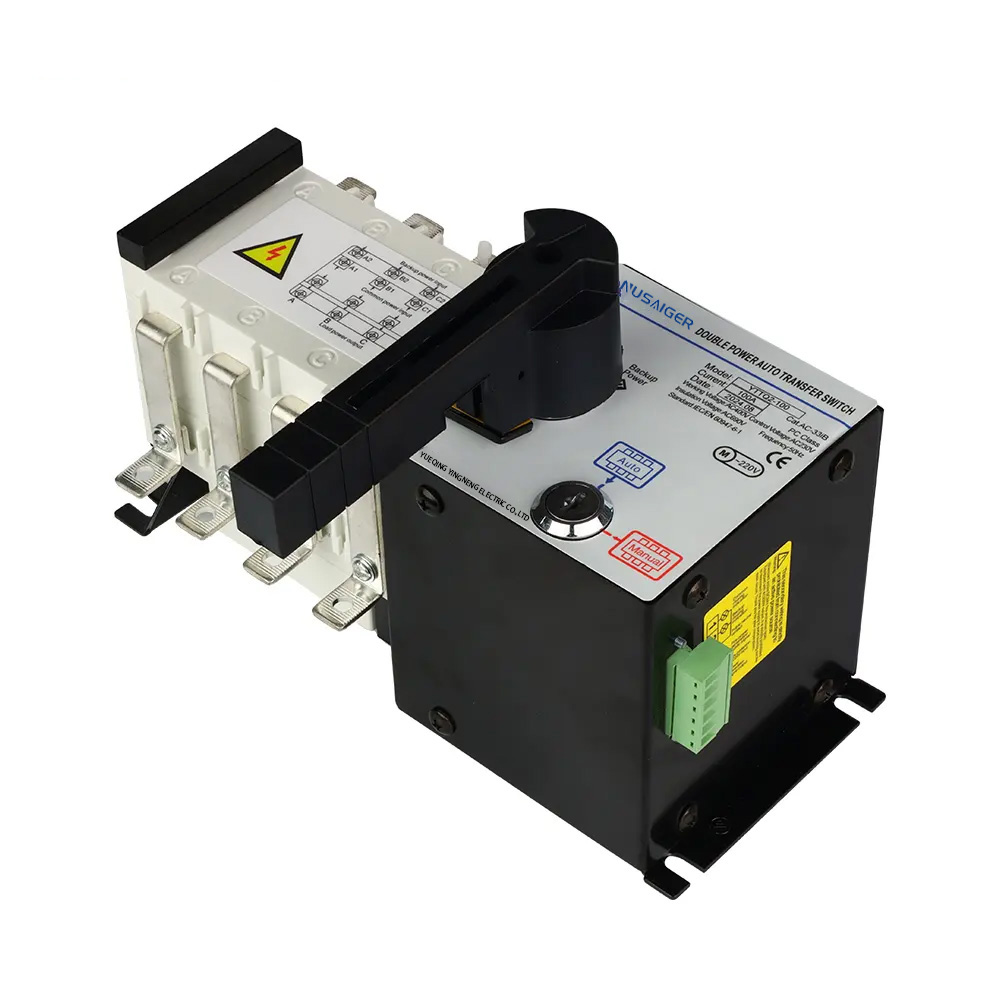Dual Power Supply Basics: Principles, Benefits, and Applications
Modern society depends on uninterrupted electricity. Hospitals, data centers, factories, and even smart homes cannot afford power failures. To meet this demand, engineers use dual power supply systems—also known as dual source systems or automatic transfer switch (ATS) solutions. These systems provide redundancy and ensure continuous operation when one power source fails. This article offers a comprehensive guide to dual power supply systems: their principles, benefits, applications, industry standards, real-world case studies, and expert advice.
1. Introduction: The Growing Need for Reliable Power
According to the U.S. Department of Energy, power outages cost American businesses nearly $150 billion annually. For critical industries, even a few seconds of downtime can result in massive losses:
- Hospitals: Risk to patient life during surgery
- Data centers: Millions lost per minute of downtime
- Factories: Production halts and damaged equipment
- Airports: Flight delays and safety hazards
This makes redundancy not a luxury, but a necessity. A dual power supply system guarantees that if one source fails, another seamlessly takes over.
2. What Is a Dual Power Supply?
A dual power supply system is an arrangement where two independent power sources are connected to a load, with an automatic or manual switching mechanism. The sources may include:
- Utility power + Backup generator
- Utility power + UPS (Uninterruptible Power Supply)
- Two independent utility feeds
- Solar or renewable energy + Grid
The switching mechanism—often an Automatic Transfer Switch (ATS)—detects a failure and transfers load within milliseconds.
3. Technical Principle of Dual Power Systems
The working principle can be summarized in three steps:
- Monitoring: The ATS constantly monitors voltage, frequency, and stability of both power sources.
- Decision: If the preferred source fails, the ATS decides to transfer the load.
- Switching: The load is transferred to the alternate source, usually within 50–300 milliseconds.
This ensures that mission-critical loads keep running with minimal disruption.
4. Components of a Dual Power Supply System
- Power Sources: Utility, generator, UPS, solar, etc.
- Automatic Transfer Switch (ATS): The heart of the system.
- Control Logic: Sensors and controllers that detect power quality.
- Switchgear: Circuit breakers, busbars, contactors.
- Monitoring Systems: IoT-enabled dashboards for real-time status.
5. Industry Standards and Regulations
Compliance ensures safety and performance. Key standards include:
- IEC 60947-6-1: International standard for automatic transfer equipment
- UL 1008: U.S. standard for transfer switches
- GB/T 14048.11: Chinese standard for low-voltage switchgear
Choosing certified equipment ensures reliability and compliance with insurance and building codes.
6. Benefits of Dual Power Supply Systems
- High Reliability: Continuous operation during outages
- Safety: Protects sensitive equipment
- Flexibility: Works with multiple energy sources
- Scalability: Easy expansion for future loads
- Cost Saving: Prevents downtime losses
7. Applications Across Industries
7.1 Hospitals and Healthcare
Operating rooms, ICUs, and medical labs cannot risk downtime. Dual power ensures patient safety and compliance with healthcare regulations.
7.2 Data Centers
According to Gartner, average downtime costs data centers $5,600 per minute. Dual power feeds (A+B) are standard practice.
7.3 Manufacturing Plants
Industrial motors and robots need clean, uninterrupted power. Dual sources protect against unplanned shutdowns.
7.4 Commercial Buildings
Elevators, fire systems, and security cameras rely on continuous power for safety and compliance.
7.5 Airports and Transportation
Navigation systems, air traffic control, and railway signaling require redundancy.
8. Case Study: Data Center in Singapore
A Tier 4 data center in Singapore implemented a dual utility feed plus diesel generator backup. With an ATS-based system, it achieved 99.995% uptime, reducing SLA penalties by 80%.
9. Cost vs Reliability Analysis
While dual power systems cost more initially, they pay off by reducing downtime costs. Example:
| Industry | Cost of Downtime (per hour) | Dual Power ROI |
|---|---|---|
| Hospital | Life risk + $50,000 | Invaluable |
| Data Center | $300,000 | Payback in 1 year |
| Manufacturing | $50,000 | Payback in 2–3 years |
10. Common Misconceptions
- “UPS and dual power are the same.” → UPS provides short-term backup, dual power ensures redundancy.
- “ATS switching is instant.” → Most take 50–300ms, only static transfer switches offer near-zero transfer time.
- “Only large facilities need it.” → Even small clinics and offices benefit from dual power.
11. Maintenance Checklist
- Monthly test of ATS transfer
- Quarterly generator test under load
- Annual insulation resistance test
- Check temperature rise in busbars and contacts
- Update firmware of smart ATS controllers
12. Expert Recommendations
Electrical consultants recommend:
- Always design with N+1 redundancy for critical facilities
- Use IoT-enabled monitoring for predictive maintenance
- Invest in certified ATS devices for safety
- Train operators to manually override during emergencies
13. FAQ
- Q1: What is the difference between ATS and UPS?
A: UPS provides short-term backup power, while ATS switches between sources. - Q2: How fast does an ATS transfer?
A: Typically 50–300 ms; static types can transfer in 4 ms. - Q3: Can dual power systems work with solar?
A: Yes, many hybrid systems use solar as one source. - Q4: How much does it cost?
A: Small units: $500–$2,000; large industrial ATS: $10,000+. - Q5: Do homes need dual power supply?
A: Optional, but recommended for smart homes with critical appliances.
14. Future of Dual Power Systems
The next decade will bring smart ATS integrated with IoT, renewable energy sources, and AI-driven predictive maintenance. Dual power systems will become more compact, affordable, and eco-friendly.
Conclusion
Dual power supply systems are no longer optional—they are essential for reliability, safety, and business continuity. Whether you run a hospital, a data center, or a commercial building, investing in a dual power system protects your assets, your operations, and most importantly—human lives.



